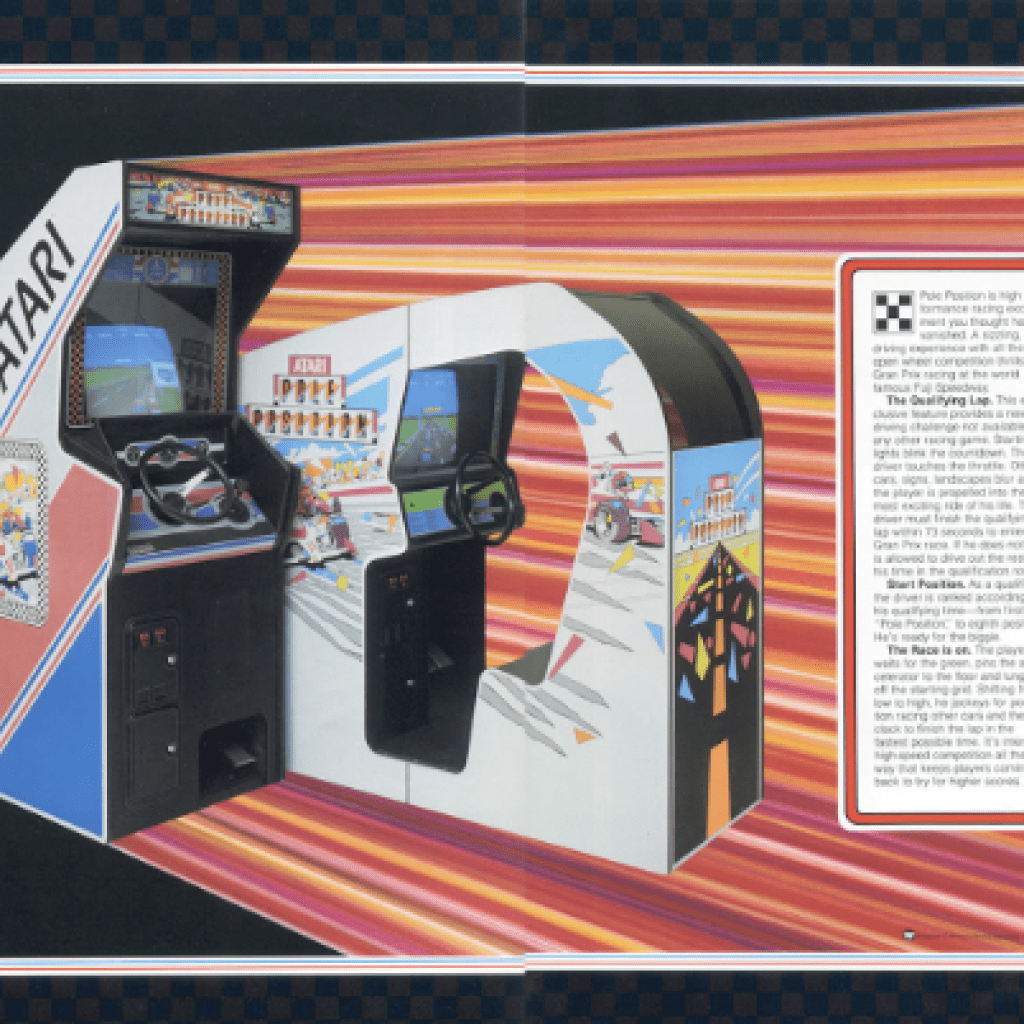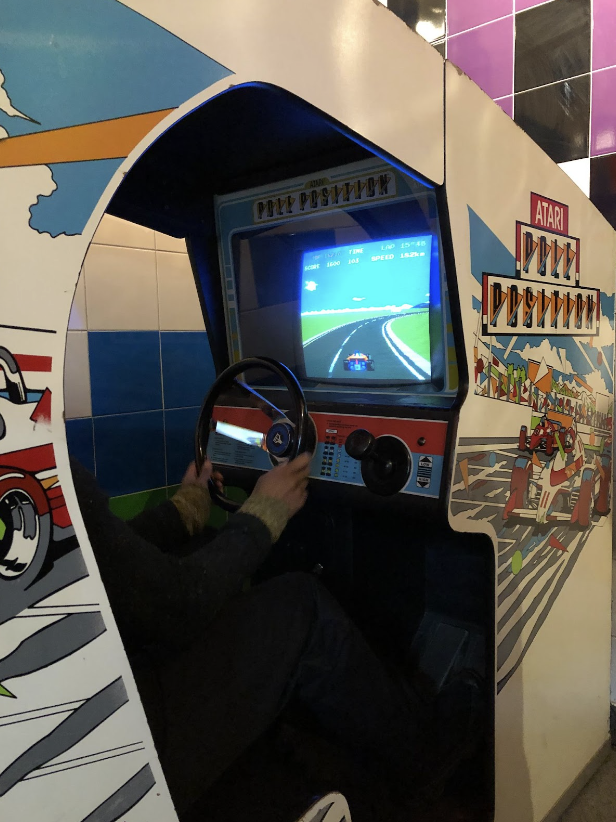To find themselves in the pole position, drivers must possess an intimate familiarity with the track, lightning-quick instincts, and nerves of steel honed through years of experience. But since 1982, gamers have been able to feel like they’re sitting in the pole position behind the wheel of a Formula One racer for the cost of a mere quarter all all thanks to Namco’s arcade racing classic, Pole Position.
Pole Position features a third-person, behind the car viewpoint that feels much more realistic than the top-down, bird’s eye view common among its contemporaries at the arcade. This shift in perspective resulted in a white-knuckle racing experience, made all the more immersive by a real deal steering wheel, a gear shift that swaps between high and low, and an accelerator pedal. The cockpit style arcade machine, in which players could luxuriate in a semi-enclosed, darkened space where the cacophony of the outside arcade was quieted and victory became the only focus, also featured a brake pedal.

In the late 1970s and early 1980s, most racing games asked players merely to stay on the track until the end of the race while avoiding obstacles like slick puddles and other race cars. While those elements are present in Pole Position (with roadside billboards advertising real brands as additional hazards), the game’s emphasis on overtaking other racers and achieving the best possible time captured the essence of racing in a way that still feels viscerally realistic today.
Other aspects of the game have not held up quite as well. Pole Position’s simplistic graphics and basic gameplay are certainly a few laps behind the hyper-realistic polygonal representations of actual cars and extensive collections of tracks found in modern racers. Yet, the game’s legacy as one of the most influential racing games of all time is cemented by the multiple firsts it introduced to the genre. For starters, Pole Position is the first racing game to have a qualifying race. Players who complete the qualifier time trial in less than 120 seconds make it to the game’s proper Grand Prix race at Fuji Speedway. Yes, that Fuji Speedway. Pole Position was the first game to feature a race based on a real-life racing circuit. Those eagle-eyed gamers familiar enough with Pole Position to confidently look up during the race can even spot Mt. Fuji off in the distance.
Pole Position was a commercial success in both Japan and the rest of the world in the early ‘80s. With that success came an inevitable sequel, 1983’s Pole Position II which would add more tracks including the “Suzuka” based on Suzuka International Racing Course, and “Seaside” based on the Toyota Grand Prix of Long Beach. And while the arcade games have precious little to identify as a narrative, that didn’t stop DIC Enterprises from producing a cartoon series to cash in on Pole Position’s popularity in 1984.

